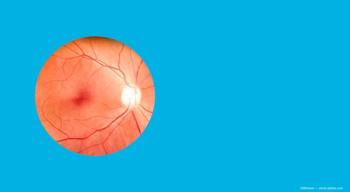
Gene therapy for LHON: Deciphering phase III data
Phase III studies of a gene therapy for Leber Hereditary Optic Neuropathy have generated some unexpected positive findings. There is biologic plausibility to explain the data.
RESCUE, the phase III study investigating GS010 (
Leber hereditary optic neuropathy (LHON) is an inherited form of vision loss. Although this condition usually begins in a person's teens or twenties, rare cases may appear in early childhood or later in adulthood.
Over time, vision in both eyes worsens with a severe loss of sharpness (visual acuity) and color vision. Data from secondary outcome measures and from a longer follow-up in RESCUE and in a completed phase III trial that enrolled patients with a longer history of vision loss (REVERSE), however, provide strong signals of efficacy, including a potential benefit in untreated fellow eyes.
RELATED CONTENT:
Gene therapy
The collective clinical trial experience also shows that the gene therapy is well-tolerated and has an acceptable safety profile.
“The GS010 phase III trials are rigorously designed and conducted studies, and any well-done clinical trial often generates unexpected findings,” said Robert C. Sergott, MD, director, Wills Eye Hospital, Neuro-Ophthalmology and founding director, William H. Annesley, Jr., EyeBrain Center,
Dr. Sergott said the researchers could not fully explain the results from the GS010 trials.
“There is reason to be encouraged, however, and to be hopeful that as we go forward and more data become available, we will begin to better understand the outcomes,” he explained.
GS010 is a recombinant adeno-associated viral vector serotype 2 containing the wild-type ND4 gene. In both RESCUE and REVERSE, enrolled patients received a single intravitreal injection of GS010 in one randomly selected eye and a sham injection in the fellow eye. The primary outcome measure in RESCUE looked at ETDRS best corrected visual acuity (BCVA) at week 48 post-injection.
To meet the primary endpoint, the results had to show a +15-letter difference in BCVA favoring the GS010-treated eyes compared to sham. The primary endpoint analysis showed, however, that there was essentially no difference between groups. Eyes treated with GS010 had a mean BCVA loss of 19 ETDRS letters compared with baseline while on average, sham-treated eyes had a loss of 20 ETDRS letters.
RELATED CONTENT:
Expected results
As expected and consistent with the natural history of LHON, mean BCVA in both groups declined after study entry and reached a nadir.
The GS010-treated eyes achieved a mean BCVA improvement of 13 ETDRS letters relative to the nadir while sham-treated eyes improved by a mean of 11 letters. Data from RESCUE that supports the efficacy of GS010 included the finding that GS010-treated eyes were threefold more likely than sham-treated eyes to have 20/200 or better BCVA at week 48 (p = 0.0247).
In addition, an analysis comparing outcomes between fellow eyes in individual patients showed that the change from baseline of high-contrast visual acuity was at least 0.3 LogMar (15 ETDRS letters) better in the treated eye than in the sham-treated eye in 24% of subjects.
A similar result was obtained in an analysis comparing improvements in low-contrast visual acuity, which is an even more sensitive measure of visual function than high-contrast visual acuity, said Dr. Sergott.
Interpreting the data
Various factors may explain why the RESCUE trial did not meet its primary efficacy endpoint. Premature timing of the evaluation is one possibility. RESCUE entered patients who were early in the course of their disease when there is typically rapid neuronal degeneration and loss of vision.
Because it takes time after GS010 injection for the gene to be incorporated into cells and for the cells to begin to express functioning proteins, week 48 may have been too early to find a statistically significant difference in BCVA change from baseline between study groups.
In fact, a plot of the trajectories of visual acuity in RESCUE participants shows that BCVA declined in both GS010- and sham-treated eyes for four to five months after injection, which is consistent with what is known about the natural history of the disease.
After reaching a nadir, BCVA remained more stable in the sham-treated eyes but was on an improving trend in the GS010-treated group at the week 48 visit.
“Additional analyses of outcomes in RESCUE after 72 weeks show that the eyes are tracking together in terms of showing continuing recovery of BCVA,” Dr. Sergott said.
At week 72, which is the second scheduled readout of the RESCUE data, GS010-treated eyes improved by 21 ETDRS letters from nadir. Sham-treated eyes closely tracked GS010-treated eyes, improving 21.7 ETDRS letters equivalent from nadir. In both study groups, 40% of eyes improved by a clinically meaningful difference (+15 ETDRS letters), from nadir.
RELATED CONTENT:
Treatment benefit
Further evidence to support the idea that a treatment benefit may be identified over time comes from the REVERSE trial that investigated GS010 in patients who had vision loss for six to 12 months before receiving treatment.
In this cohort of patients who were more likely to have entered a chronic phase of disease characterized by less rapid vision loss, BCVA improved by a mean of 11 ETDRS letters from baseline to week 48, both in GS010-treated eyes and the sham-treated contralateral control eyes.
By week 96, BCVA in the GS010-treated eyes had improved by a mean of 15.4 ETDRS letters compared with baseline, representing a gain of 28.1 ETDRS letters relative to the worst vision. While discovering BCVA improvement in sham-treated eyes in the GS010 trials was somewhat of a surprise, access of GS010 into the control eye is a more plausible explanation than spontaneous recovery, said Dr. Sergott.
“Cases of spontaneous vision improvement in patients with LHON are infrequent, and OCT imaging has shown us that from the time of onset of vision loss, there is not spontaneous structural recovery in the retina or optic nerve,” he explained. “Defying that natural history, data from 96 weeks of follow-up in REVERSE show that the thickness of the retinal ganglion cell layer and retinal nerve fiber layer increased by 30% to 100% in some eyes treated with GS010, and the improvements are occurring bilaterally in some cases.”
Dr. Sergott also noted that studies of anti-VEGF therapy for retinal vascular diseases document systemic exposure to the medication after intravitreal injection and show a possible therapeutic effect in untreated fellow eyes.
“Based on neutralizing antibody measurements in the peripheral blood and transient increases in liver function tests, we know that GS010 injected into the vitreous enters the systemic circulation, indicating the possibility of its access to the contralateral eye,” he concluded.
Disclosures:
ROBERT C. SERGOTT, MD
P: 215/928-3130
Dr. Sergott is a consultant to GenSight.
Newsletter
Don’t miss out—get Ophthalmology Times updates on the latest clinical advancements and expert interviews, straight to your inbox.



















































.png)


